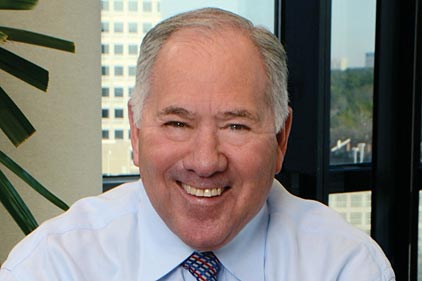
|
| Richard D. Alaniz |
Overview of Title VII
Title VII of the Civil Rights Act of 1964 prohibits discrimination and harassment in the workplace. In a practical sense, workplace harassment is generated by an individual — whether a co-worker, supervisor, manager, etc. There must be someone engaging in harassing conduct in order for there to be workplace harassment. And under Title VII, the status of that person affects an employer’s liability.
This makes sense. After all, if an employee is harassed at the workplace by a fellow employee and no one else ever knows about it — no supervisor, manager, or human resources personnel — the company will be in no position to take any action. For this reason, harassment promulgated by a co-worker has been judged under a general negligence standard. Only if the employer knew (or should have known) of the harassment and failed to take appropriate action can the employer be held liable. Such a rule is only fair.
However, when a supervisor is the one engaging in the harassment, courts have taken a different approach. In such a situation, courts have recognized that supervisors have considerably more leverage over employees than co-workers. A supervisor has the power to hire, fire, deny a promotion, reassign an employee’s duties and responsibilities, reduce or change an employee’s benefits, and generally change an employee’s employment status. Such power is provided to the supervisor by the employer, and, as such, courts have held that supervisor harassment ought to be held to a different standard than co-worker harassment. In fact, in some circumstances the company may be held strictly liable when a supervisor engages in harassment, regardless of whether the company was aware of the harassment.
As originally articulated, holding a supervisor to a higher standard only made sense. However, many courts, and notably the Equal Employment Opportunity Commission (EEOC), which is responsible for enforcing Title VII, adopted a significantly expanded definition of a supervisor, thus exposing employers to increased potential liability. The EEOC advocated a somewhat nebulous definition of supervisor that focused on the amount of control the individual had over the victim of harassment. Such a definition proved difficult to apply, created confusion, and added unnecessary complexity to harassment cases. Most important to employers, it also transformed many individuals not traditionally thought of as supervisors into supervisors for liability purposes.
The New Definition of Supervisor
Fortunately, the recent Supreme Court decision significantly erased a good amount of this confusion by adopting a more straight-forward and narrower definition of supervisor than that advanced by the EEOC. The Supreme Court held that a supervisor is one who has the power to take “tangible employment actions” against the victim. Tangible employment actions include:
• The power to hire;
• The power to fire;
• The power to promote or not promote;
• The power to reassign with significantly different responsibilities; and
• The power to significantly change an employee’s benefits.
In a nutshell, only if the person in question has the power to take tangible employment actions against the victim will that person be considered a supervisor for Title VII purposes.
Benefits of the New Definition
This new definition promises to provide far greater clarity in harassment cases. Employers should now be able to point to whether the alleged harasser could (or could not) hire, fire, promote, etc., and determine early in the case whether the negligence standard under co-worker harassment applies or whether the more stringent and difficult-to-defend standard of supervisor harassment is applicable.
This should provide for a more streamlined process and may help employers limit broad discovery requests and other costly tactics of plaintiffs’ attorneys. While the decision by no means represents a perfect defense, there are, however, certain opportunities that employers should capitalize on now, in order to take advantage of the ruling.
What to Do Next
Employers should begin by reviewing the language in their job descriptions and examining how they classify employees. If an employee does not have the authority to make the types of tangible employment decisions the Supreme Court cited, his or her job description should make this clear. However, the Supreme Court noted that if the power to make such decisions is effectively delegated, so that a higher-up is simply rubber-stamping any decision, the employee actually making the decision may still be held to be a supervisor.
Often leadmen and crew leaders are perceived as having such authority. If that is not the employer’s intent, their job descriptions should make that limitation clear. In general, employers should ensure that all job descriptions are clear and that only the employees best suited to wield the power to take tangible employment decisions actually have that power.
Finally, employers should also ensure that those identified as supervisors receive appropriate supervisory training in discrimination, harassment, non-retaliation, and other employment law topics. Likewise, the employer’s anti-harassment policy should be posted and otherwise clearly communicated to all employees on a regular basis.
The recent Supreme Court decision promises to limit which employees constitute supervisors and may help employers shut down harassment lawsuits earlier in the process. Nonetheless, employers should take proactive steps to ensure that every effort is being made to make sure that harassment is not occurring to begin with and that if it does occur, it is immediately addressed. After all, as the saying goes, an ounce of prevention is worth a pound of cure.
Publication date: 7/22/2013
Want more HVAC industry news and information? Join The NEWS on Facebook, Twitter, and LinkedIn today!



Report Abusive Comment